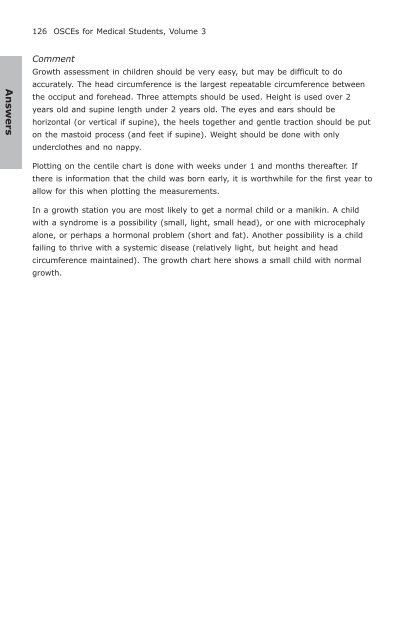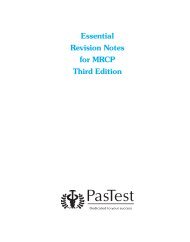OSCEs for Medical Students, Volume 3 Second Edition
OSCEs for Medical Students, Volume 3 Second Edition
OSCEs for Medical Students, Volume 3 Second Edition
You also want an ePaper? Increase the reach of your titles
YUMPU automatically turns print PDFs into web optimized ePapers that Google loves.
126 <strong>OSCEs</strong> <strong>for</strong> <strong>Medical</strong> <strong>Students</strong>, <strong>Volume</strong> 3AnswersCommentGrowth assessment in children should be very easy, but may be difficult to doaccurately. The head circumference is the largest repeatable circumference betweenthe occiput and <strong>for</strong>ehead. Three attempts should be used. Height is used over 2years old and supine length under 2 years old. The eyes and ears should behorizontal (or vertical if supine), the heels together and gentle traction should be puton the mastoid process (and feet if supine). Weight should be done with onlyunderclothes and no nappy.Plotting on the centile chart is done with weeks under 1 and months thereafter. Ifthere is in<strong>for</strong>mation that the child was born early, it is worthwhile <strong>for</strong> the first year toallow <strong>for</strong> this when plotting the measurements.In a growth station you are most likely to get a normal child or a manikin. A childwith a syndrome is a possibility (small, light, small head), or one with microcephalyalone, or perhaps a hormonal problem (short and fat). Another possibility is a childfailing to thrive with a systemic disease (relatively light, but height and headcircumference maintained). The growth chart here shows a small child with normalgrowth.
















